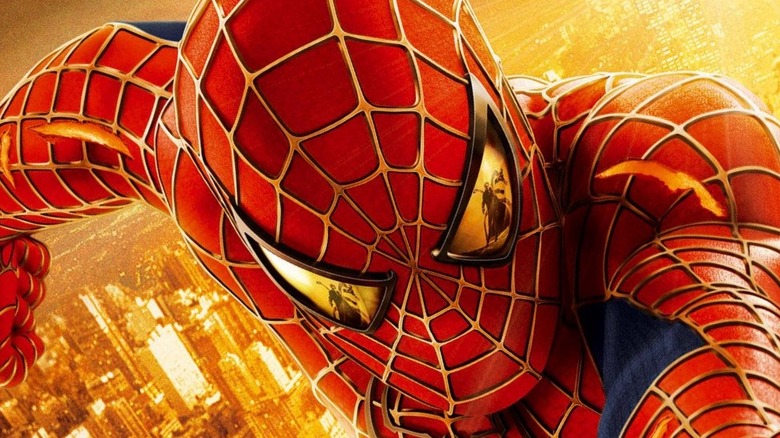
In the '90s, Spider-Man was caught in a web of litigation that made it seem like he'd never get his own, proper film. Two decades earlier, select episodes of "The Amazing Spider-Man" TV series enjoyed a theatrical release outside the U.S. Around the same time, a short film based on Toei's television adaptation, "Spider-Man," played in Japanese theaters. However, these were glorified TV movies. Fans hoping for a real Spider-Man film could only fantasize about the James Cameron blockbuster that never was.
That changed with the dawn of the superhero movie millennium, which brought a revolving set of Spider-Men to the big screen. Tobey Maguire, Andrew Garfield, and Tom Holland took turns embodying the web-slinger in live-action, while a bevy of different voices brought animated versions of the character to life. His origin would be told and retold so often it became expendable. You know the drill: with great power comes great responsibility, and so on.
Spider-Man is arguably the world's most recognizable superhero. For years, his balloon flew through Manhattan in Macy's Thanksgiving Day Parade. Yet, there's a sense in which a Spider-Man movie is only as good as its villain. In the comics, Spidey has a rogues gallery on par with Batman's, but his film franchise has struggled to deliver on that promise. Ranking his eight movies is sure to inspire debate, but with "Spider-Man: No Way Home" on the way, there's no better time to do it.
The Amazing Spider-Man
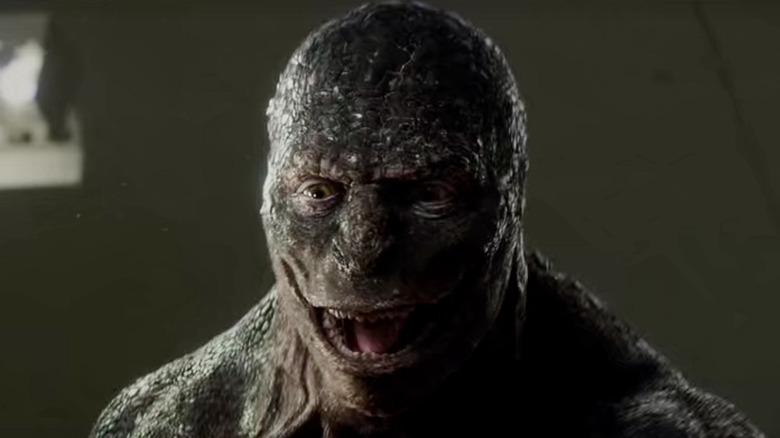
Even at 136 minutes, "The Amazing Spider-Man" feels like a hatchet job. It's one of those movies where certain plot threads (e.g. Irrfan Khan's character) only make sense in view of scenes left on the cutting room floor. It's a "Batman Begins" wannabe, and the influence isn't subtle. For starters, it gives undue emphasis to Peter Parker's backstory as a pseudo-orphan who is, as Sony put it, "shaped by the disappearance" of his parents, not the death of his beloved uncle.
The rest of the movie's paint-by-numbers plot gets filled in with other weak substitutions: Richard Parker for Thomas Wayne, Oscorp Tower for Wayne Tower, Captain Stacy for Sergeant Gordon, etc. Here again, Welsh and British actors don American accents, and the villain gases the city. The difference is that director Marc Webb, unlike Christopher Nolan, skipped straight from his indie breakout hit ("500 Days of Summer") to a studio tentpole with no mid-budget feature in-between.
In the annals of Marvel movie villains, the Lizard joins the ranks of the Abomination as, well, an abomination. Lacking a snout and parading around naked most of the time, he's a sewer-dwelling CG turd that no toilet can contain (that's not an exaggeration; he literally smashes his way through one in a bathroom stall). If you've ever wondered what an off-brand, video-game version of Killer Croc would look like, this Lizard's your answer.
Spider-Man 3
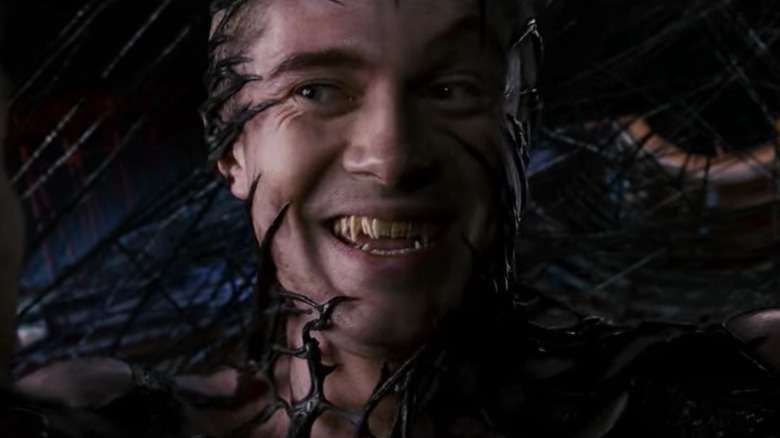
The final installment of Sam Raimi's Spider-Man trilogy is perhaps best remembered for its emo Peter Parker, who invites us to "dig on this" as he swings from a chandelier and dances evilly in a bid to make Mary Jane jealous. He's a hip hepcat with a new look ripped from the pages of a hairstyle catalog, not a comic book, and the attitude of a 97-pound weakling who becomes the Hero of the Beach -- or, in this case, the jazz club.
And then there's the pre-Tom Hardy Venom, played by Topher Grace, who sports vampire teeth and frosted hair. Raimi was rightly more interested in Sandman than Venom, and if "Spider-Man 3" had limited itself to one or even two villains, maybe it would have turned out better. Alas, producer Avi Arad wanted Venom in the movie because the brain-eating symbiote was popular with fans. Raimi's heart wasn't in it, but they shoehorned Venom in anyway The result is the textbook case of an overstuffed superhero sequel. In addition, Grace is physically a far cry from Eddie Brock's muscular comic book equivalent, who could often be seen lifting a barbell (or three) in Todd McFarlane and Erik Larsen's classic art.
Then there's James Franco's "New Goblin." Seriously, don't even think about calling him Green Goblin or Hobgoblin. No, it's New Goblin, lame and maskless and saddled with intermittent amnesia. After seeing this movie, you may wish to develop some amnesia of your own. Honestly, just pretend Tobey Maguire's run ended with "Spider-Man 2."
The Amazing Spider-Man 2
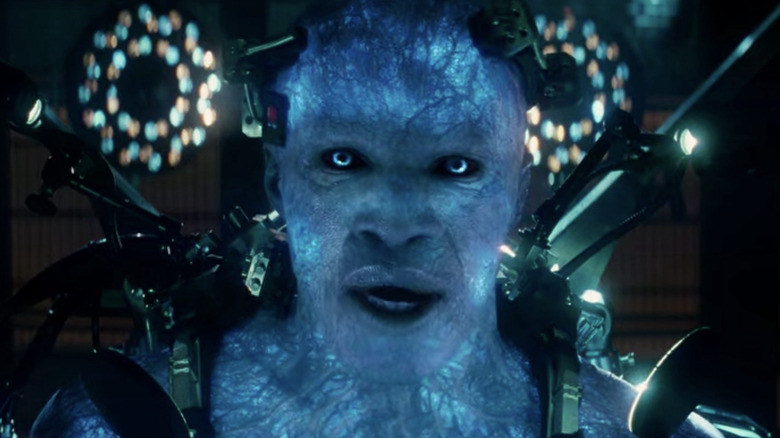
It's strange to think that there's a Spider-Man movie with a Hans Zimmer soundtrack that Wikipedia classifies as a dubstep album. Say what you will about "The Amazing Spider-Man 2," but at least it's not as dull and derivative as its predecessor. As Spidey swings through New York and protects innocent bystanders, buoyed by his triumphant new musical theme ("I'm Spider-Man"), you could be forgiven for thinking this movie was going to be a course correction.
"The Amazing Spider-Man 2" is still a mercenary endeavor that gets lost in the setup for a Sinister Six spinoff, which, of course, never happened. Once again, we've got a garbage Goblin, plus a clunky mech Rhino who's as much of a disgrace to the source material as the Silver Samurai was the year before in "The Wolverine." Show us Paul Giamatti in a padded onesie, you cowards! Electro lights up Times Square with his blue crackling energy, and while he's basically a glowworm in a hoodie, he's less of an eyesore than the Lizard.
At least a new screenwriting team contributes some funny dialogue even as they radically alter the mythos. Here, Peter Parker is no longer an everyman, but rather the only person on earth whose DNA would allow him to become Spider-Man. From its convenient convergence of construction cranes to its conspiracies in improbable train-car hideouts, "The Amazing Spider-Man" duology is perhaps best summed up by Aunt May actress Sally Field, who said of it: "You can't put ten pounds of s*** in a five-pound bag."
Spider-Man
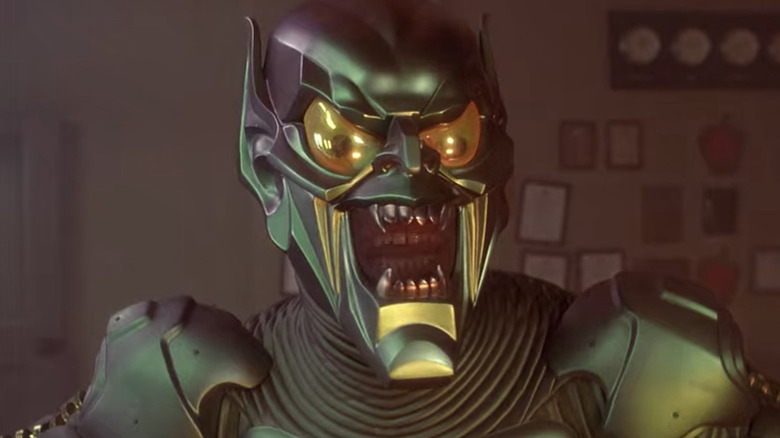
The original "Spider-Man" movie has its moments, like the upside-down kiss in the rain. Romance is really the film's defining aspect. Early issues of the '60s "Amazing Spider-Man" comic built up to the reveal of Mary Jane Watson as a redheaded bombshell whose unseen beauty made her a mystery to readers, culminating in the iconic moment when she showed up on Peter Parker's doorstep and delivered the now-famous line, "Face it, tiger ... you've just hit the jackpot!" Sam Raimi's "Spider-Man" goes a different route. It elects to have Mary Jane, played by Kirsten Dunst, be the very first person we see onscreen. As the opening voiceover informs us, this is a story "all about a girl ... the girl next door."
Anchoring much of the film around Mary Jane broadened its appeal at the multiplex. Together with "Blade" and "X-Men," "Spider-Man" was part of the early wave of Marvel movies that helped popularize superhero films, making comic book characters other than Superman and Batman viable box office stars.
Still, Willem Defoe's Green Goblin is a campy, cringe-inducing symptom of the genre's growing pains. Cackling cartoon villains can work in certain circumstances, but time has not been kind to this one's nasally voice and Power Rangers armor. Imagine if they had gone with the creepier, more comics-faithful "animatronic makeup" hybrid mask designed by Amalgamated Dynamics, Inc., which worked on the film's special effects. As it is, whether he's militarized, mutated, or a musclebound gargoyle, it feels like Hollywood will never get Spider-Man's chief nemesis right.
Spider-Man: Far From Home
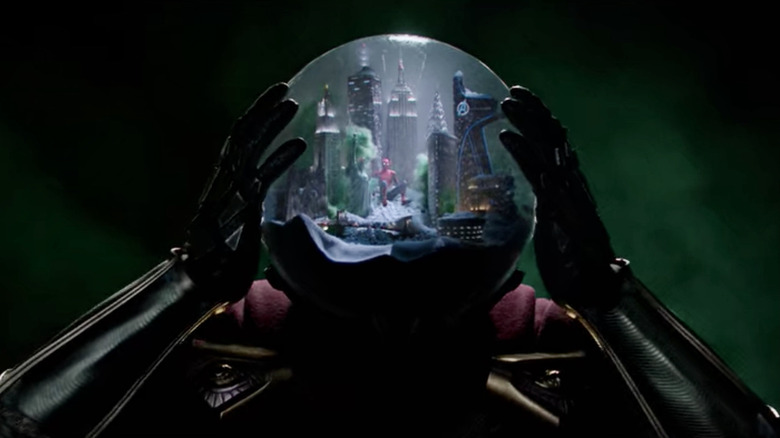
The most recent Spider-Man movie is as entertaining as ever, but it's also laced with some surprising political subtext. The villain is a tech-enabled con man who uses media sensationalism to his benefit in the post-truth landscape (a theme echoed in J. Jonah Jameson, who shows up as a talking head on the "controversial news website," TheDailyBugle.net).
Jake Gyllenhaal nails it as Mysterio. His drone-enhanced mo-cap suit strikes the right balance between a pseudo-realistic and comics-accurate costume, and justifies Mysterio's fishbowl helmet. Had Mysterio been the bad guy in 2004 instead of 2019, it feels like the filmmakers or their studio overlords would have chickened out on a look like that.
Nevertheless, with seven Spider-Man movies before it, "Far from Home" chooses to distance itself from some elements of its hero's history. Mary Jane has become Michelle Jones and Sandman has become an Easter egg (along with Hydro-Man and Molten Man, all of whom turn out to be nothing more than elemental holograms). Also, because "Far from Home" is the first follow-up to "Avengers: Endgame," much of it is interwoven with a larger shared universe. That's not a knock against it. Indeed, we've now moved from the "worst" half of the list to the "best" half. It's just to say that this is a less of a standalone movie than some of the others in this eight-legged ranking.
Spider-Man 2
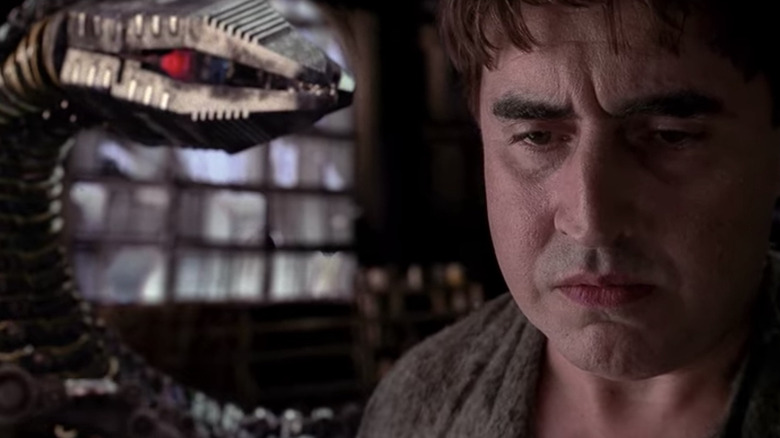
Sam Raimi's "Spider-Man" movies hold a certain cornball charm and, again, helped pave the way for the current gold rush of superhero films. J.K. Simmons is perfect casting as J. Jonah Jameson and Danny's Elfman's score remains perfectly attuned to the material. However, the only chapter in the trilogy that really holds up all-around is "Spider-Man 2." It's still the best Marvel movie released before 2008; some fans may rate it even higher than that.
Raimi's horror-comedy roots shine through in the movie's hospital rampage, which helps establish Doctor Octopus' mechanical arms as a fearsome threat with a murderous intelligence and a pernicious influence on Otto Octavius' mind. As such, he's Spider-Man's first worthy film foe, and brings out the best in our hero. We even see a flash of Spidey's jokey nature when Doc Ock is robbing a bank and Spidey hurls a bag of coins at him, quipping, "Here's your change!" It's nice to hear Tobey Maguire's quavering voice pipe up with a wisecrack for once.
"Spider-Man 2" won an Academy Award for Best Visual Effects, which means more when you consider that the Academy wouldn't honor the franchise again until "Into the Spider-Verse" took Best Animated Feature in 2018. The movie is considered a classic for a reason, which is probably a large reason why Alfred Molina is set to return in "Spider-Man: No Way Home" as a digitally de-aged Doc Ock.
Spider-Man: Homecoming
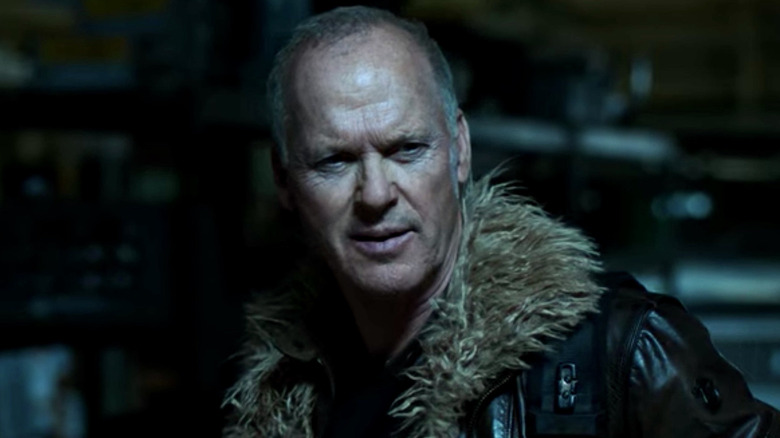
As the Spider-Man film franchise has progressed, Aunt May has grown progressively younger and Peter Parker's motivations have drifted further away from his formative tragedy, the death of Uncle Ben. Andrew Garfield's Spider-Man is haunted more by the ghost of Gwen Stacy's dad — and his own — than his uncle's. By the time we get to "Spider-Man: Homecoming," we're only 15 years removed from the first Sam Raimi movie, and yet Ben's given way to other father figures, including Iron Man.
"Homecoming" frees the audience from another unnecessary origin rehash and frees Peter from the baggage of getting people killed. It may stage action on the Washington Monument and Staten Island Ferry, but with its bodegas and house parties, it feels truer to the "friendly neighborhood" spirit than any other Spider-Man movie. The film's title references Peter's school's homecoming dance while also letting us know that Spidey's back at Marvel where he belongs. Traditionalists might balk at seeing Spider-Man's suit tied to Stark Tech, but the MCU has already drawn heavily from Marvel's "Civil War"-era comics. This is just one more example.
Make no mistake about it: Tom Holland is the best live-action Spider-Man. As it turns out, humor was always the missing ingredient. And then there's Michael Keaton as the Vulture, who's a bad dad but one of the MCU's better villains. Only the plainclothes Shocker underwhelms. Alas, anyone hoping for a traditional depiction of Spidey's larger rogues gallery would perhaps better be served watching "Spider-Man: The Animated Series." And speaking of animation ...
Spider-Man: Into The Spider-Verse
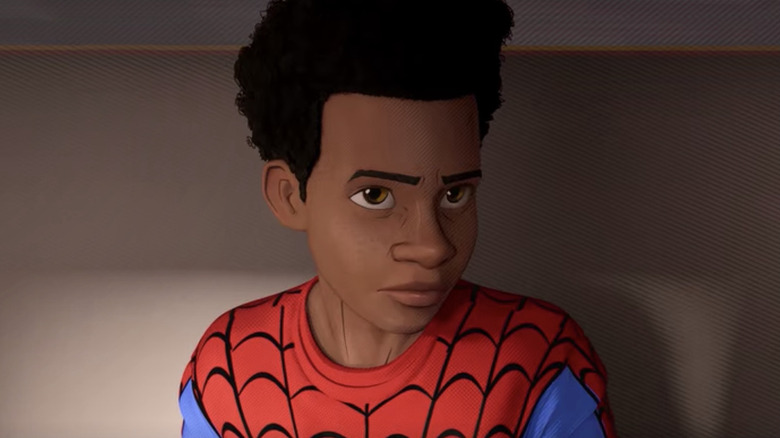
If the essence of Spider-Man is his everyman quality, that leaves plenty of room for interpretation. He can be a sadsack in sweatpants whose greatest tip is to use baby powder in the suit to prevent chafing. He can also be the a Spanish-speaking kid in a store-bought Halloween costume, who is bitten by his own radioactive spider and inspired by the Spider-Man legend. Or, in this case, why not both?
"Into the Spider-Verse" brings an exhilarating, freeform, hip-hop sensibility to Spider-Man, giving the hero a new alliterative name — Miles Morales — and a surrogate Spider-Family rendered in different animation styles. Collectively, they embody Spidey's comedic side better than any previous big-screen adaptation. This the most imaginative and inclusive Spider-Man film, not only in terms of representation, but also in how it serves up an all-encompassing take on the Spider-Man mythos. It incorporates so much: Spider-Gwen, Spider-Man Noir, the Japanese Peni Parker, even Spider-Ham and Spider-Man 2099.
The villains are a mixed bag even in the best Spider-Man movie. Two home runs here are the menacing Prowler and the female Doctor Octopus, voiced by Mahershala Ali and Kathyrn Hahn, both of whom have played other memorable Marvel baddies. Kingpin's wiseguy accent is weird, though, and Liev Schreiber's take can't escape the shadow of "Daredevil" standout Vincent D'Onofrio. It's nice to see Tombstone, even if he doesn't have much to do, and whoever designed Scorpion must have mistaken "The Mummy Returns" for Marvel canon. Chalk it up to "glitching" in this pop-art kaleidoscope, which, with its kinetic feel, is the closest we may ever see to a comic book come alive.
Read this next: Spider-Man: No Way Home Trailer Breakdown: Be Careful What You Wish For
The post Spider-Man movies ranked from worst to best appeared first on /Film.
from /Film https://ift.tt/3yh7D9v
